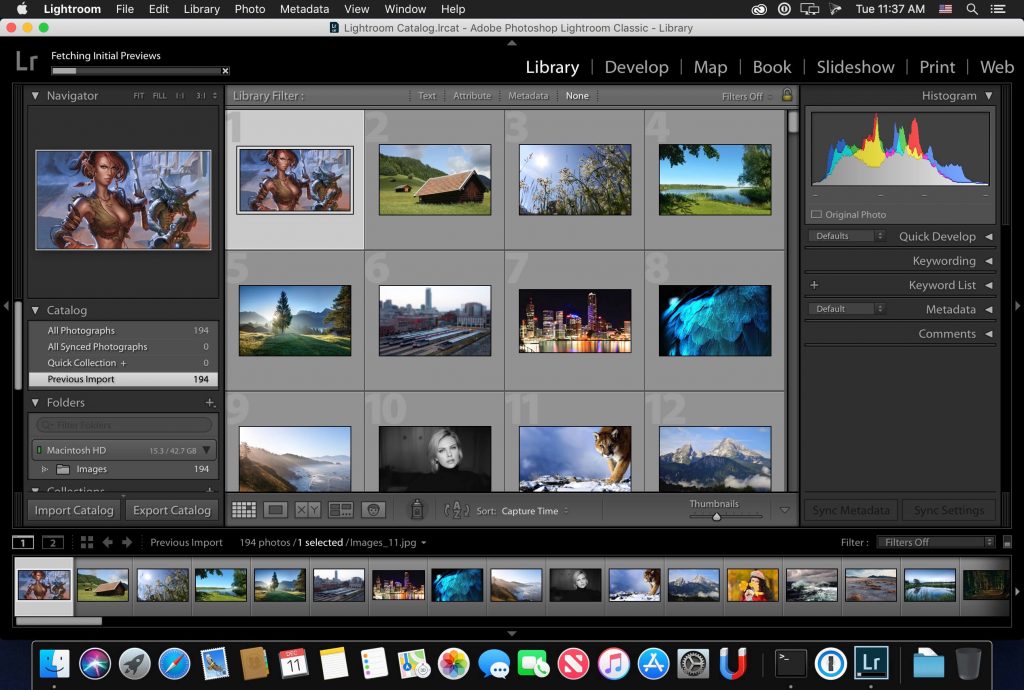

The app has also gained new slideshow options, automatic panorama stitching, video slide shows, and many other features. A new HDR (high dynamic range) tool uses two images to create a composite photo with more vivid colors and detail, while brushes such as radial and graduated filters have been added. As shown in the embedded video, facial recognition has been added, enabling functionality similar to Apple’s Faces feature from Aperture and iPhoto. Now solely a 64-bit application, Lightroom 6/CC promises huge speed improvements when applying prior effects to images, as well as newly added tools and brushes. Lightroom manages large photo libraries, while offering photographers powerful tools for RAW and JPEG image adjustment.
LIGHTROOM 6 DOWNLOAD MAC PROFESSIONAL
Apple notably recommended Lightroom as a replacement for its recently-discontinued Aperture professional photo application, and worked with Adobe to build an Aperture library importing tool to aid users during the transition. Sharing the same code, design, and much of the same functionality, the two Lightroom releases are separated into purchasable (Lightroom 6) or subscription (Lightroom CC) versions, only the latter of which can sync with Adobe’s mobile applications. The answers may surprise you…įollowing months of rumors, Adobe is today announcing Photoshop Lightroom 6 and Lightroom CC, the latest versions of its popular photo editing and organization software.
LIGHTROOM 6 DOWNLOAD MAC PLUS
Alternately, Lightroom 6 can be purchased by itself for $149 as a standalone download, minus Photoshop and cloud functionality.īelow, I’m going to focus on the key questions Aperture users have been asking: what it’s like to transition from Aperture to Lightroom - including new details added after initial publication of this article - plus which version of Lightroom to buy, and whether transitioning is a good (and safe) idea. As part of Adobe’s “Creative Cloud,” Lightroom CC comes bundled with Adobe’s latest version of Photoshop, plus cloud photo synchronization services, for $9.99 per month. On April 21, Adobe released Lightroom 6 and Lightroom CC (2015) as standalone and cloud-linked versions of the same app. Both promise major speed improvements over Lightroom 5, new tools and brushes, a new facial recognition feature, automatic HDR and panoramic photo creation, and new slideshow options. I didn’t since Lightroom 5 was almost three years old, I wanted to see what Adobe would deliver in its much-anticipated sequel.

Apple understood that it was ceding at least the professional market to Lightroom, and even helped Adobe to develop Aperture and iPhoto to Lightroom importers. With the writing on the wall, some people switched to Lightroom 5 well before Photos officially debuted last month.

When Apple discontinued iPhoto and Aperture in favor of an even more basic app called Photos, many people -amateur photographers and professionals alike - had to decide whether to downgrade to Photos or switch to Lightroom.
LIGHTROOM 6 DOWNLOAD MAC MAC
Until this year, Mac owners had three major options for organizing large digital photo collections: Apple’s mainstream iPhoto, Apple’s “pro” app Aperture, and Adobe’s similarly professional-grade Lightroom.


 0 kommentar(er)
0 kommentar(er)
